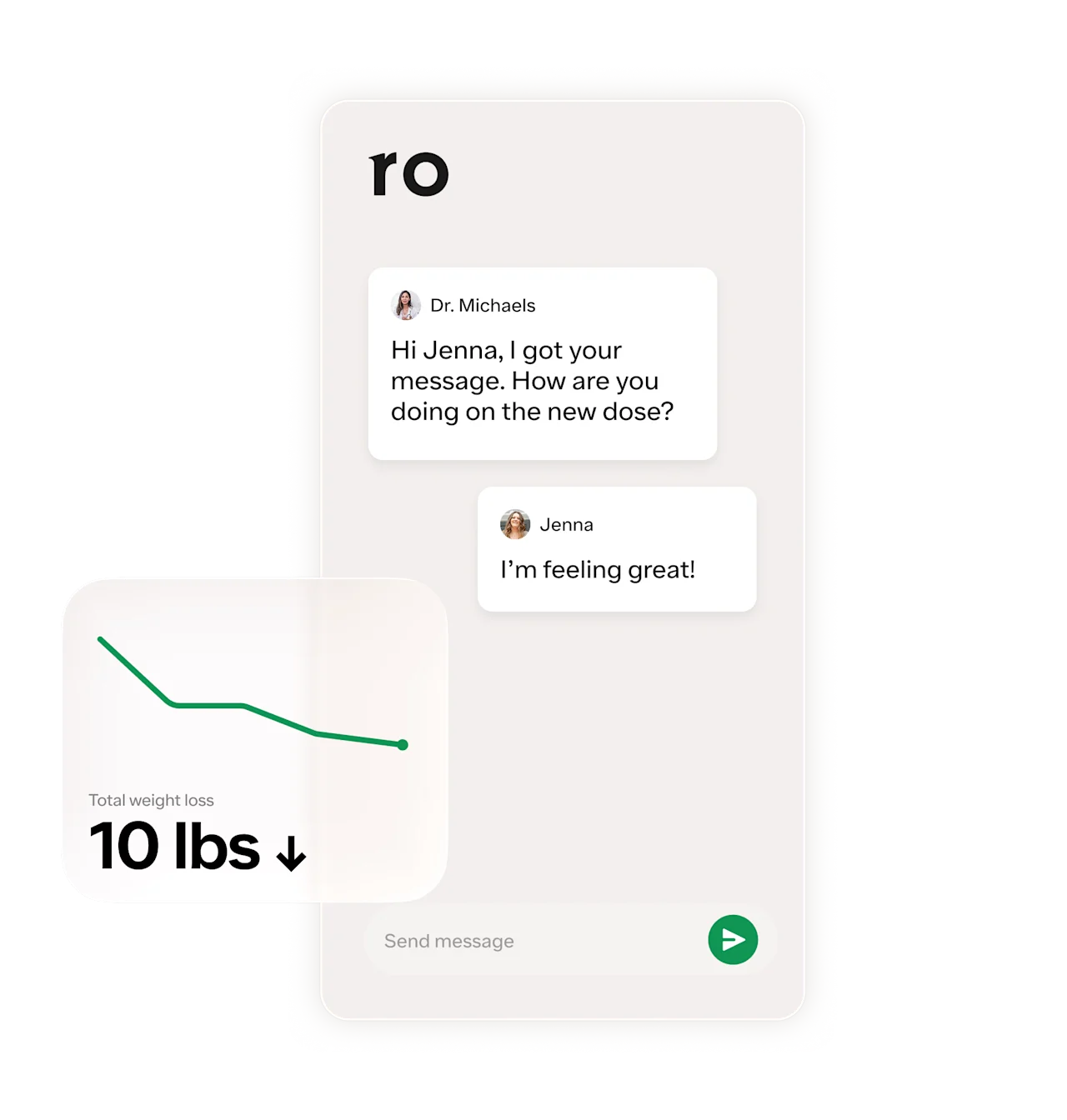Key takeaways
Wegovy (semaglutide) and phentermine are two prescription drugs that are approved for weight loss.
Wegovy is a brand-name GLP-1 medication that’s injected weekly using a pre-filled pen while phentermine is the generic name for an oral pill taken once daily.
While both drugs can reduce appetite, there are many other factors to consider when comparing Wegovy vs. phentermine: available dosage, prices, side effects, and more.
Here's what we'll cover
Here's what we'll cover
Here's what we'll cover
Key takeaways
Wegovy (semaglutide) and phentermine are two prescription drugs that are approved for weight loss.
Wegovy is a brand-name GLP-1 medication that’s injected weekly using a pre-filled pen while phentermine is the generic name for an oral pill taken once daily.
While both drugs can reduce appetite, there are many other factors to consider when comparing Wegovy vs. phentermine: available dosage, prices, side effects, and more.
With the recent rise in popularity of semaglutide medications, you’re likely familiar with Wegovy. But what about other weight loss drugs, such as phentermine?
Phentermine (vs. Wegovy) is an oral treatment for obesity that is approved by the US Food and Drug Administration (FDA) for short-term use. Here, we explore the similarities and differences between Wegovy vs. phentermine, including uses, side effects, prices, and more.
What is Wegovy?
Wegovy (semaglutide) is a brand-name prescription medication that’s FDA-approved for chronic weight management in the following people:
Adults and children 12 years and older with obesity (which is commonly considered a body mass index (BMI) of 30 kg/m2 or greater)
Adults with overweight (typically defined as a BMI of 25 kg/m2 or greater) with at least one weight-related medical condition, such as type 2 diabetes, high blood pressure (hypertension), or high cholesterol
In March 2024, the FDA also approved Wegovy as a treatment to reduce the risk of serious cardiovascular problems (e.g. stroke, heart attack) in adults with heart disease and obesity or overweight.
In the case of both FDA approvals, Wegovy is intended to be used alongside diet (specifically, reduced caloric intake) and exercise.
An injectable medication, Wegovy is administered subcutaneously (i.e. under the skin) once weekly via pens with built-in needles. The pens, which come pre-filled, are available in five dose strengths between 0.25 mg and 2.4 mg. When first starting Wegovy, you’ll take the lowest dose for 4 weeks. From there, your healthcare provider will likely titrate, or gradually increase, your dose over the course of several months until you reach the maximum recommended dosage of 2.4 mg once weekly. Depending on factors such as how well your body responds to the treatment, your specific target dose and titration schedule may vary.
How does Wegovy work?
Wegovy contains the same active ingredient as Ozempic: semaglutide. Semaglutide (and thus, Wegovy) belongs to a class of drugs known as glucagon-like peptide-1 (GLP-1) receptor agonists. They mimic the effects of the naturally occurring GLP-1 hormone, which is involved in appetite, digestion, and blood sugar.
By imitating this hormone, Wegovy increases insulin production, which lowers blood sugar levels. It also slows the movement of food through the gastrointestinal tract, prolonging the feeling of fullness. In this way, Wegovy can affect appetite, which can help reduce hunger and food cravings. Similarly, the medication sends signals to the brain letting it know you’re satiated, which can further aid in controlling hunger and, in turn, the amount of calories consumed.
What is phentermine?
Phentermine is an oral medication that was approved by the FDA as a short-term treatment for obesity in 1959.
Phentermine is the active ingredient in and generic name of brand-name drugs, such as Adipex-P and Lomaira. It can be taken alone, though it’s often combined with topiramate, an anti-seizure medication that has weight loss effects, in a single formulation.
Qsymia, the brand-name combination of phentermine-topiramate, is FDA-approved for long-term weight management in:
People ages 12 and older with obesity
Adults with overweight and one or more weight-related health condition, such as type 2 diabetes, hypertension, or high cholesterol
Like other weight loss medications, phentermine should be used alongside lifestyle changes, such as diet and exercise. Phentermine (vs. Wegovy), however, is not FDA-approved for long-term use. On its own, it’s approved for short-term therapy (12 weeks or less). It can be taken intermittently, which means a healthcare provider may advise you to take a break before returning to it. A healthcare provider might also prescribe phentermine off-label for usage that lasts longer than the recommended 12 weeks if a patient is still seeing benefits from the medication and not having side effects. While this approach is not necessarily FDA-approved, it is still evidence-based as demonstrated by this 28-week trial of phentermine at 15 mg per day.
Phentermine is available as capsules, tablets, and orally dissolving tablets and comes in various strengths: 8 mg, 15 mg, 30 mg, and 37.5 mg. Typically, it’s taken once daily 30 minutes before breakfast or 1-2 hours after breakfast.
How does phentermine work?
Phentermine is part of a class of drugs called sympathomimetic anorectics. Like other anorectics, phentermine works by suppressing appetite. People with a reduced appetite may consume fewer calories, which could lead to weight loss.
While we know that phentermine suppresses appetite, its exact mechanisms of action aren’t fully understood yet. It has been shown to stimulate the sympathetic nervous system (what is behind your “fight or flight” response), thereby increasing levels of certain neurotransmitters, such as noradrenaline or norepinephrine, in the brain. This could also lead to increased energy and physical activity — two effects that may result in more calories being burned throughout the day and, in turn, weight loss.
The Federal Drug Enforcement Administration (DEA) classifies phentermine as a schedule IV controlled substance, meaning it has potential for abuse and dependency. That said, a study found the risk of this happening to be low and withdrawals after stopping the medication tend to be fairly uncommon. Still, it’s a good idea to check with your healthcare provider before stopping either phentermine. They may recommend tapering the medication slowly to reduce the risk of adverse effects.
Wegovy vs. phentermine: side effects
Because they don’t work the same way, Wegovy and phentermine typically have different potential side effects, though some do overlap.
Wegovy side effects
The most common side effects of Wegovy include:
Nausea
Diarrhea
Vomiting
Constipation
Abdominal pain
Bloating
Belching
Wegovy slows digestion, which is why the most common side effects tend to be gastrointestinal.
In some cases, Wegovy can cause serious side effects, such as gallstones, increased heart rate, and other effects.
You shouldn’t take Wegovy if you:
Have a personal or family history of thyroid cancer, including medullary thyroid carcinoma (MTC)
Have a personal or family history of Multiple Endocrine Neoplasia syndrome type 2 (MEN 2)
Are planning on becoming pregnant, pregnant, or breastfeeding
Are allergic to any of the ingredients in Wegovy
Its main drug interactions include medications for managing diabetes, such as insulin and oral medications, as the combination could lead to hypoglycemia (low blood sugar)..
Phentermine side effects
The most common side effects of phentermine include:
Nervousness and excitability
Headache
Dry mouth and thirst
Sweating
Rapid heartbeat or palpitations
Nausea
Constipation
Historical sympathomimetics (i.e. sympathomimetic drugs that have previously been used) have been linked to atrial fibrillation (i.e. irregular heart beat), acute psychosis, and pulmonary hypertension (i.e. high blood pressure in the lungs), but such severe side effects have not been reported with phentermine
It may not be safe to take phentermine if you have other health conditions or are pregnant or breastfeeding. In addition to possible drug or supplement interactions, there are precautions around phentermine if you have the following:
Heart conditions (e.g. heart disease, hypertension, arteriosclerosis)
Glaucoma
Uncontrolled hyperthyroidism (i.e. overactive thyroid)
History of drug abuse
Wegovy vs. phentermine: which is better for weight loss?
The active ingredient in Wegovy, semaglutide, and phentermine have both been studied and proven effective for weight loss — that is, however, when combined with diet and exercise.
While results vary by person, here’s what the research shows:
Wegovy (semaglutide):The effectiveness of Wegovy can vary depending on the dose and length of treatment. Clinical trials have demonstrated that the maximum dose — 2.4 mg — can result in more weight loss than that which can occur with lower strengths. In a 68-week randomized clinical trial, people who took the maximum dose of semaglutide once per week experienced an average weight loss of nearly 16%.
Phentermine: A 12-week randomized control trial looked at the safety and efficacy of phentermine in patients with obesity who also had controlled diabetes, high blood pressure, or high cholesterol. Those who took phentermine lost more weight than those who took the placebo; they also had lower cholesterol levels. In a 28-week randomized controlled trial, up to 46.2% of patients taking phentermine achieved at least 5% weight loss. The trial also demonstrated that combining phentermine with topiramate can increase its effectiveness.
When deciding between the two drugs, you and your healthcare provider likely will also weigh additional factors, such as tolerance, cost, or contraindications.
Wegovy vs. phentermine: cost
The cost of any prescription drug — whether phentermine vs. Wegovy — depends on factors such as health insurance, savings offers, and location. That said, there’s a large discrepancy between the cost of the two weight loss medications.
Wegovy cost
Without health insurance, the list price for Wegovy is $1,349.02 per package, which includes four pre-filled injectable pens (i.e. a 28-day supply). This equates to $337.25 per week or $16,188.24 per year if you pay out of pocket.
Novo Nordisk also offers a savings program through which patients with commercial or private insurance (that includes prescription coverage) can pay as little as $0 for a 28-day supply of Wegovy. If your insurance does not cover Wegovy, you can save up to $500 for a 28-day supply with the savings offer.
No insurance or prefer to pay in cash? Then you can get Wegovy for a fraction of its list price through Ro, thanks to its integration with Novo Nordisk. Ro offers Wegovy pens for the following cash prices:
$199 per month for the first two months (limited time offer; only valid for 0.25 mg and 0.5 mg doses)
$349 per month thereafter
Navigating insurance coverage can be challenging, but your healthcare provider’s office may be able to help. When you get Wegovy through Ro, for example, you also receive access to an insurance concierge who will work to find you coverage for the medication. Another way to ease your burden? Ro’s GLP-1 Insurance Coverage Tracker, a free, online tool that can help you find out if your insurance covers treatment with GLP-1 medications.
Phentermine cost
Compared to other weight loss drugs, phentermine tends to be more affordable. Unfortunately, however, it’s not commonly covered by health insurance.
The cost of any prescription drug — whether phentermine vs. Wegovy — depends on factors such as health insurance, savings offers, and location. That said, there’s a large discrepancy between the cost of the two weight loss medications.
While the cost of phentermine depends on several factors, such as
The average out-of-pocket cost of a month’s supply of phentermine 37.5 mg tends to be around $8-$25, according to SingleCare. Keep in mind, though, that those prices can vary depending on your location and pharmacy. Plus, brand-name versions (e.g. Adipex-P, Qsymia) tend to cost more.
Just as with Wegovy, there are ways to help you avoid breaking the bank with phentermine. Manufacturers of brand-name phentermine products may offer coupons or saving programs. For example, the makers of Lomaira, KVK Tech, have a low-cost program that caps patients’ costs at no more than $0.50 per pill.
You can also take advantage of savings cards and coupons offered through free, online services, such as SingleCare and GoodRx. Both of these can also be helpful whether you’re prescribed Wegovy vs. phentermine (or any other drug, for that matter).
Can you take Wegovy and phentermine together?
Currently, there isn’t a clear answer as to whether you can take Wegovy and phentermine together. The prescribing information (PI) for both medications come with disclaimers that essentially say that the “safety and efficacy” of combining either Wegovy or phentermine with other drugs or products for weight loss has not been established. The PI for phentermine goes on to say “coadministration of phentermine and these drug products [for weight loss] is not recommended.”
There hasn't been any research or any direct call-outs about not taking the two together. There aren’t any studies observing their effects when combined, so possible interactions or risks when taking them together has yet to be determined, nevermind understood. Both medications can have side effects — some of which overlap, such as nausea and constipation.
Generally, mixing prescription drugs (and OTC supplements) can be dangerous. Weight loss medications specifically shouldn’t be combined with other products intended for weight loss unless prescribed by a healthcare provider. Taking more than one prescription drug can increase the risk for potentially dangerous drug interactions.
Bottom line: It’s best to ask this question and discuss the topic with your healthcare provider.
Wegovy vs. phentermine: how do they compare?
We’ve covered a lot of ground thus far, so let’s take a look at how Wegovy and phentermine stack up at-a-glance.
| Wegovy | Phentermine (Adipex, Lomaira) |
|---|---|---|
Active ingredient | Semaglutide | Phentermine |
Drug class | GLP-1 receptor agonist | Sympathomimetic anorectic (stimulant/appetite suppressant) |
FDA-approved uses | Chronic weight management in adults with obesity or overweight with at least one weight-related health condition
Reduced risk of cardiovascular disease, heart attack, and stroke in adults with heart disease and obesity or overweight | Short-term weight management in people 16 years old or older with obesity and adults with obesity or overweight and at least one weight-related health condition |
Most common side effects | Nausea, diarrhea, vomiting, constipation, abdominal pain, bloating, belching | Nervousness, excitability, insomnia, headache, dry mouth, thirst, sweating, tachycardia, palpitations, nausea, constipation |
Dosage | Once weekly injection available in five dose strengths: 0.25 mg, 0.5 mg, 1 mg, 1.7 mg, and 2.4 mg | Once daily capsule, tablet, or orally dissolving tablet in four dose strengths: 8 mg, 15 mg, 30 mg, and 37.5 mg |
Average monthly cost without insurance | $1,349.02 list price; $199-$349 per month (cash price) | ~$8-$25 |
DISCLAIMER
If you have any medical questions or concerns, please talk to your healthcare provider. The articles on Health Guide are underpinned by peer-reviewed research and information drawn from medical societies and governmental agencies. However, they are not a substitute for professional medical advice, diagnosis, or treatment.
Wegovy Important Safety Information: Read more about serious warnings and safety info.
Ozempic Important Safety Information: Read more about serious warnings and safety info.
GLP-1 Important Safety Information: Read more about serious warnings and safety info.
References
Aronne, L. J., Wadden, T. A., Peterson, C., et al. (2013). Evaluation of phentermine and topiramate versus phentermine/topiramate extended-release in obese adults. Obesity (Silver Spring, Md.), 21(11), 2163–2171. doi: 10.1002/oby.20584. Retrieved from https://onlinelibrary.wiley.com/doi/full/10.1002/oby.20584
DailyMed. (2023). Qsymia- phentermine and topiramate capsule, extended release. Retrieved from https://dailymed.nlm.nih.gov/dailymed/drugInfo.cfm?setid=40dd5602-53da-45ac-bb4b-15789aba40f9
Davies, M., Færch, L., Jeppesen, O. K., et al. (2021). Semaglutide 2·4 mg once a week in adults with overweight or obesity, and type 2 diabetes (STEP 2): a randomised, double-blind, double-dummy, placebo-controlled, phase 3 trial. Lancet (London, England), 397(10278), 971–984. doi: 10.1016/S0140-6736(21)00213-0. Retrieved from https://pubmed.ncbi.nlm.nih.gov/33667417/
Hendricks, E. J., Srisurapanont, M., Schmidt, S. L.,et al. (2014). Addiction potential of phentermine prescribed during long-term treatment of obesity. International Journal of Obesity (2005), 38(2), 292–298. doi: 10.1038/ijo.2013.74. Retrieved from https://pubmed.ncbi.nlm.nih.gov/23736363/
Hirsch, J., Mackintosh, R. M., & Aronne, L. J. (2000). The effects of drugs used to treat obesity on the autonomic nervous system. Obesity Research, 8(3), 227–233. doi: 10.1038/oby.2000.26. Retrieved from https://pubmed.ncbi.nlm.nih.gov/10832765/
Kang, J. G., Park, C. Y., Kang, J. H., et al. (2010). Randomized controlled trial to investigate the effects of a newly developed formulation of phentermine diffuse-controlled release for obesity. Diabetes, Obesity & Metabolism, 12(10), 876–882. doi: 10.1111/j.1463-1326.2010.01242.x. Retrieved from https://pubmed.ncbi.nlm.nih.gov/20920040/
KVK Tech. (2024). The Lomaira Lo-Cost Access Program. Retrieved from https://lomaira.com/money-saving-offer/
Munro, J. F., MacCuish, A. C., Wilson, E. M., & Duncan, L. J. (1968). Comparison of continuous and intermittent anorectic therapy in obesity. British Medical Journal, 1(5588), 352–354. doi: 10.1136/bmj.1.5588.352. Retrieved from https://www.ncbi.nlm.nih.gov/pmc/articles/PMC1984840/
National Center for Biotechnology Information. (2024). PubChem compound summary for CID 4771, phentermine. Retrieved from https://pubchem.ncbi.nlm.nih.gov/compound/Phentermine
National Institute of Diabetes and Digestive and Kidney Diseases (NIDDK). (2020). Phentermine. LiverTox: Clinical and research information on drug-induced liver injury. Retrieved from https://www.ncbi.nlm.nih.gov/books/NBK547916/
National Institute of Diabetes and Digestive and Kidney Diseases (NIDDK). (2024). Prescription medications to treat overweight & obesity. Retrieved from https://www.niddk.nih.gov/health-information/weight-management/prescription-medications-treat-overweight-obesity
National Library of Medicine. (2017). Phentermine. Retrieved from https://medlineplus.gov/druginfo/meds/a682187.html
NovoCare. (2023). What is the list price for Wegovy and will it impact me?. Novo Nordisk. Retrieved from https://www.novocare.com/obesity/products/wegovy/let-us-help/explaining-list-price.html
Novo Nordisk. (2024). Wegovy Savings Card | Wegovy (semaglutide) Injection 2.4 mg. Retrieved from https://www.wegovy.com/coverage-and-savings/save-on-wegovy.html
Rubino, D. M., Greenway, F. L., Khalid, U., et al. (2022). Effect of weekly subcutaneous semaglutide vs daily liraglutide on body weight in adults with overweight or obesity without diabetes: The STEP 8 randomized clinical trial. JAMA, 327(2), 138–150. doi: 10.1001/jama.2021.23619. Retrieved from https://jamanetwork.com/journals/jama/fullarticle/2787907
SingleCare. (n.d.). Phentermine Hcl Coupons & Prices. Retrieved from https://www.singlecare.com/prescription/phentermine-hcl
U.S. Food and Drug Administration (FDA-a). (2024). FDA approves first treatment to reduce risk of serious heart problems specifically in adults with obesity or overweight. Retrieved from https://www.fda.gov/news-events/press-announcements/fda-approves-first-treatment-reduce-risk-serious-heart-problems-specifically-adults-obesity-or
U.S. Food and Drug Administration (FDA-a). (2022). FDA approves treatment for chronic weight management in pediatric patients aged 12 years and older. Retrieved from https://www.fda.gov/drugs/news-events-human-drugs/fda-approves-treatment-chronic-weight-management-pediatric-patients-aged-12-years-and-older
U.S. Food and Drug Administration (FDA-b). (2022). Highlights of prescribing information: Phentermine hydrochloride- phentermine hydrochloride capsule. Retrieved from https://nctr-crs.fda.gov/fdalabel/services/spl/set-ids/129e781c-5366-4986-8e67-6b35fa4c3f39/spl-doc
U.S. Food & Drug Administration (FDA). (2025). Highlights of Prescribing Information: Wegovy (semaglutide) injection, for subcutaneous use. Retrieved from https://www.accessdata.fda.gov/drugsatfda_docs/label/2024/215256s015lbl.pdf
U.S. Food and Drug Administration (FDA). (n.d.). Orange Book: Approved Drug Products with Therapeutic Equivalence Evaluations. Retrieved from https://www.accessdata.fda.gov/scripts/cder/ob/search_product.cfm














